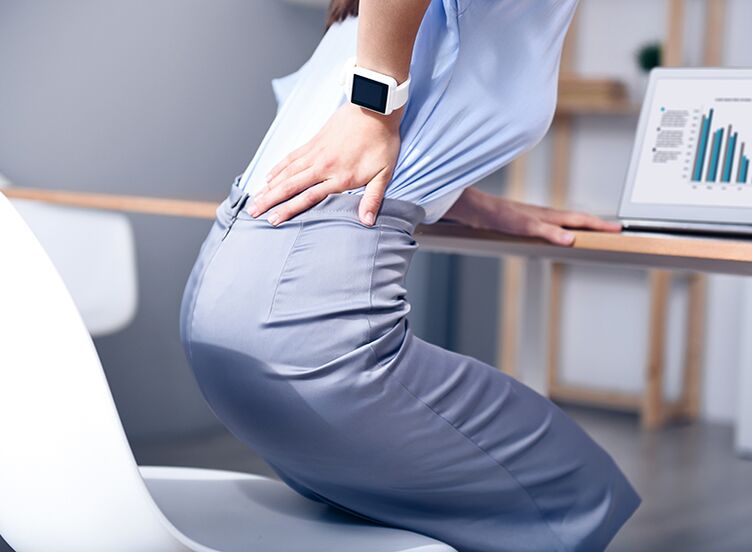First of all, the doctor notes that in the norm there should be no low back pain at all:

If pain syndrome is rare - for example, after weight lifting, exercise, or an uncomfortable position - this is a variation of the norm. But if the pain occurs frequently - every time after sitting in an uncomfortable chair - this is why it is important to be on the lookout and find the cause.
With pain, which occurs every six months or a year only after traumatic factors, you can't rush to see a doctor. But if the pain syndrome becomes chronic or moves to a stronger stage and then returns to the lungs, this is reason to contact a specialist. The neuroscientist added:
In addition, the reason for making an appointment with a specialist can be a single, but acute pain that arises for no reason, as well as a sharp pain syndrome. Especially if the pain spreads to the legs or other parts of the body. This may be accompanied by other unpleasant sensations: loss of sensitivity, "goose bumps" on the skin, burning sensation. In such cases, you must see a doctor.
Why can the lower back hurt?
According to doctors, the most common cause is myofascial pain syndrome, which is pain associated with abnormal muscle tension in the lower back.
The doctor said that the myopathy syndrome occurs because we sit uncomfortable, move the body, lift weights. As a result, the muscles contract. But often there is compression of the root in the spine - this is another nature of neuropathic pain.
Neurologists explain that the roots leave the spinal cord and extend to different parts of the body, including the lower back. And when there's pressure on these nerves, you can start to feel pain in different parts of your body: in your thighs, coccyx, sacrum, and even in your abdomen.
The third option is pathology of internal organs. These can be problems with the kidneys, intestines, and urology or gynecology. In this case, back pain acts as a signal of the presence of other diseases.
We also add that pain itself is of two types: pain (i. e. , inflammation) and neuropathy.
The first is related to inflammation in the muscle fibers - it manifests in myalgia syndrome and is associated with a traumatic factor. This pain is often dull, accompanied by an increase in local temperature, when touching the lower back area, it will feel hot.
Neuropathic pain presents differently: it is a burning sensation, goosebumps, numbness, cold, decreased sensitivity. Even a small injection in the lower back can make the pain worse. If you feel such symptoms, see a neurologist urgently. And in general, the answer to the question of which doctor to see for back pain is clear: a neurologist.
Is it possible to manage pain at home?
Some people think that the problem of lower back pain will be solved by replacing the chair. Neurologists are certain: it's always easier to see a doctor.
Of course, you can change each chair for more comfort. But it may turn out that this is not the question. While you should have a comfortable office chair to work in anyway, it's a good idea to get up every two hours and give yourself some light physical activity: bend over, bend over tochange the position of the lower back.
Pillows or rollers placed under the back work on the same principle:
We sat as usual, then propped up a pillow. We keep this position for a bit - they take it off again, - advised the neurologist. - Such a lumbar support is also useful. You can change the tilt angle of the screen, including moving it a little to the right, a little bit to the left. As a result, the load changes - both in the lower back, chest area and neck.
If you need relief now, your doctor notes that dry heat should only be used for low back pain:
In this situation, under no circumstances should you take a hot shower. But electric pads and hot packs with salt (the kind of bags that grandma used to make) help a lot. Different apps will also work. These are mats with needles: if you lie on them, then the muscles are lost.
In this regard, the doctor recommends connecting a short course of non-steroidal anti-inflammatory drugs and the use of topical anti-inflammatory ointments:
If you've done all of this and the pain is gone in 3-4 days, there's no problem, one might say. If the pain doesn't go away, there's no other option: you absolutely must see a doctor.

























